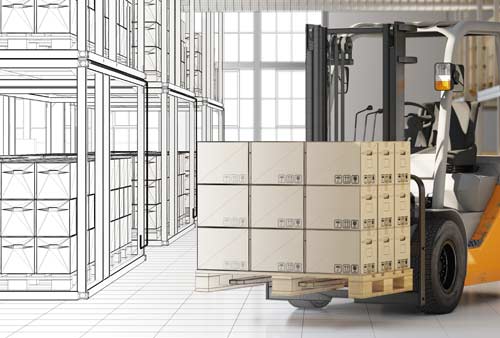What is material flow planning?
Optimizing the material flow reduces throughput times, lowers error rates and increases efficiency.
Material flow planning: the finetuning for efficient intralogistics
The effective intermeshing of transportation flows inside and outside the company is a central aspect of logistics. The better tasks can be coordinated and harmonized along the value chain, the shorter the throughput times and logistics costs in general. This is where material flow planning comes into play, as it forms the basis for transparent and effective processes.
proLogistik explains the most important components, explains the interaction of WMS and MFC and shows methods for optimizing material flow planning.
What does material flow planning basically involve?
Even if it often seems "understandable" to outsiders, material and information flows in the context of logistics are anything but negligible. This is where it is decided how physical movements of goods can actually be realized and planned in any form. The flow of goods is a key indicator of a company's performance, as it determines how efficiently goods of all kinds can be coordinated.
Aspects that play a key role in material flow planning are:
- Transportation
- (Intermediate) storage
- Cover
- Editing and processing
- Material stocks and inventory changes
- Recording of material consumption
In short, the aim of material flow planning is to make any goods available in the exact specification (quantity, quality, etc.) at the appropriately planned time and place. For this to succeed, the material flow computer (MFC) and warehouse management system (WMS) need to work together - more on this in the next paragraph.
Material flow planning: for the best possible utilization of all operational resources
In the past, the material flow in the warehouse was usually adjusted in line with the increase in production. However, in view of the growing variety of product specifications, there is now a complex number of production variants to manage, which must be taken into account in terms of internal material flow planning. Companies can secure competitive advantages by allowing more product customization, reducing throughput times, ensuring a higher degree of adherence to delivery dates. It is therefore crucial to coordinate the tasks that arise in a sub-area in the best possible way and to plan material flows transparently and efficiently.
In other words, how can structures be planned and designed in such a way that all partial aspects are taken into account holistically, from incoming goods to outgoing goods? Material flow planning as a segment of intralogistics therefore focuses on optimizing material and goods inventories, space requirements and the effective intermeshing of transport, storage and logistics processes. Material flow optimization follows production planning.
Excursus: How the material flow computer (MFC) and warehouse management system (WMS) work together
To give you a better understanding of the content of material flow planning, we would first like to look at important practical components. In the following, we therefore outline a scenario that can generally be applied across all sectors in this basic form.
- The material flow computer (MFC) is responsible for communication between the systems, it acts as an anchor point between the warehouse management system (WMS) and the control system, i.e. the shipment processing system (SPS). Information about the status, capacities or transit times within logistics flows together here.
- The warehouse management system (WMS) is superordinate to the MFC and manages the stock, where transport orders are created and forwarded to the material flow computer. This allows control commands to be generated that can be used to control storage and retrieval machines, packaging lines and the like.
As a result, the data bundled in the material flow computer (MFC) can be used to visualize processes and optimize transport routes thanks to material flow planning. This allows the throughput to be adapted to the respective degree of utilization in order to make the best possible use of all resources. A wide range of control tools, for example via tablet or smartphone, further simplify handling. Material flow planning therefore leads to more efficient processes with regard to the flow of goods, which pays off not only in terms of business management.
Material flow planning as an adjusting screw for holistic warehouse system management
Now that we have explained the basics in practical terms, we would like to conclude by discussing aspects that each company must consider and weigh up individually when optimizing the flow of goods. A material flow analysis enables adjustments and a restructuring of warehouse systems in order to eliminate weak points, save costs and minimize wasted resources (keyword: value stream).
The classic procedure for adapting material flow planning to the needs of the company:
- Preparation and determination of all relevant data (planning basis)
- Development of a concept and rough planning based on the product structure (specifications of the product range, including quantity, size, weight) and planning data (cost framework, deadlines, etc.)
- Cost-benefit analyses and profitability tests of various solution approaches as well as definition of technical and organizational details
- Realization including coordination of construction steps
Material flow planning has special requirements that vary greatly depending on the size of the company, the industry and the variety of products. However, it is essential for a holistic optimization of transport routes, the basis for cost savings and further synergy effects.
